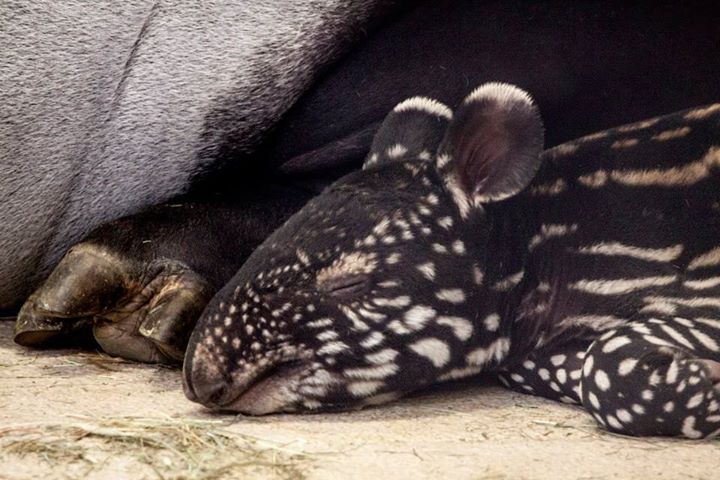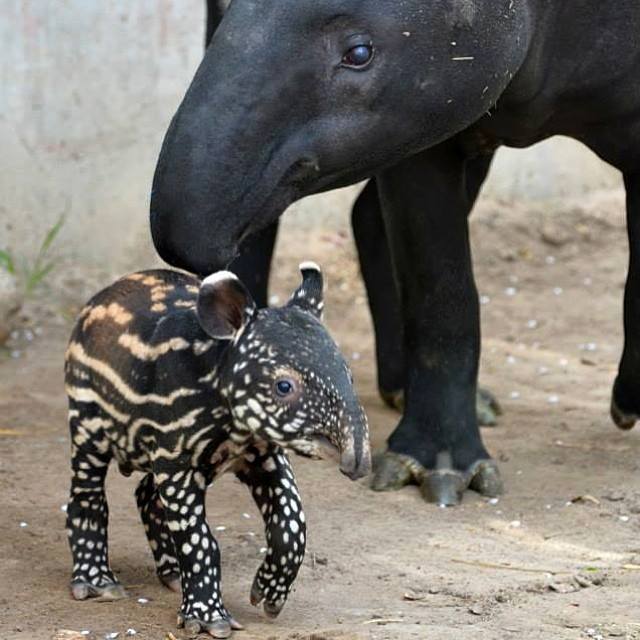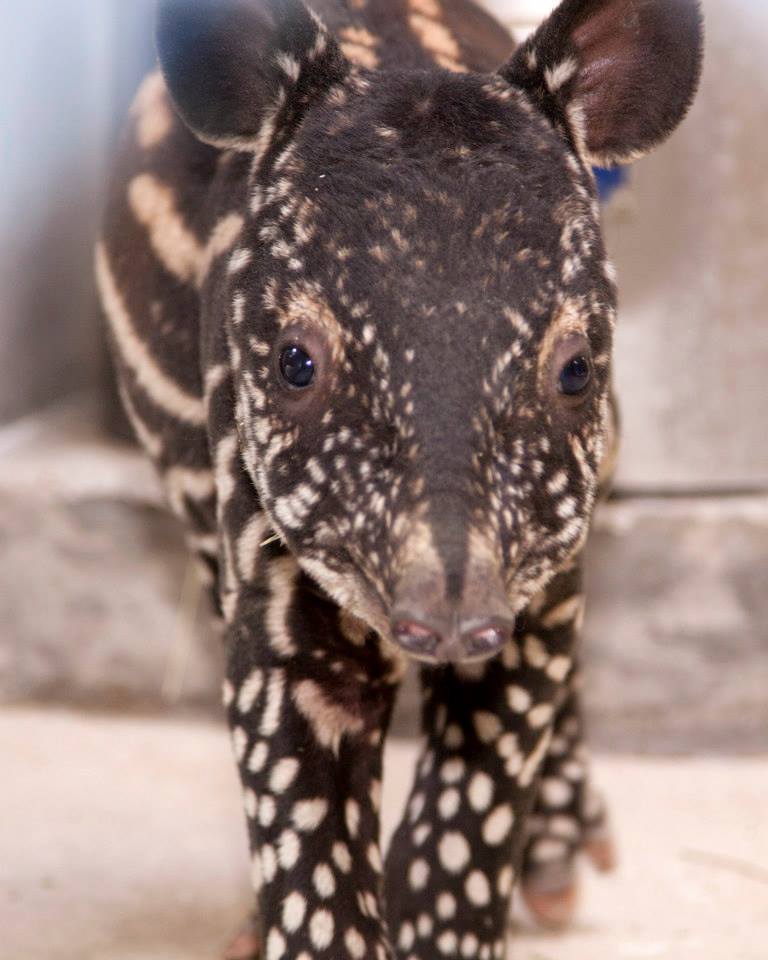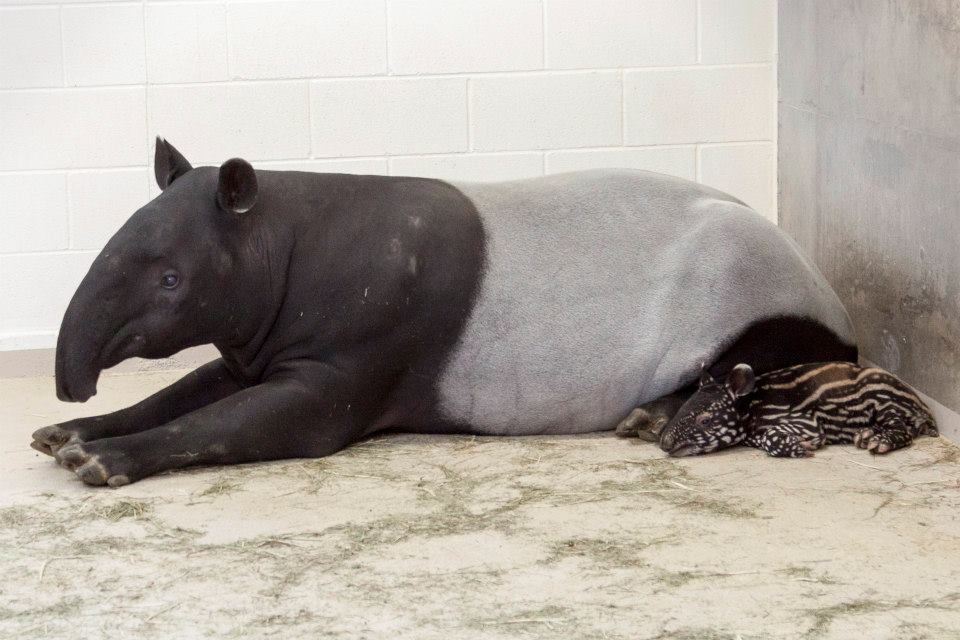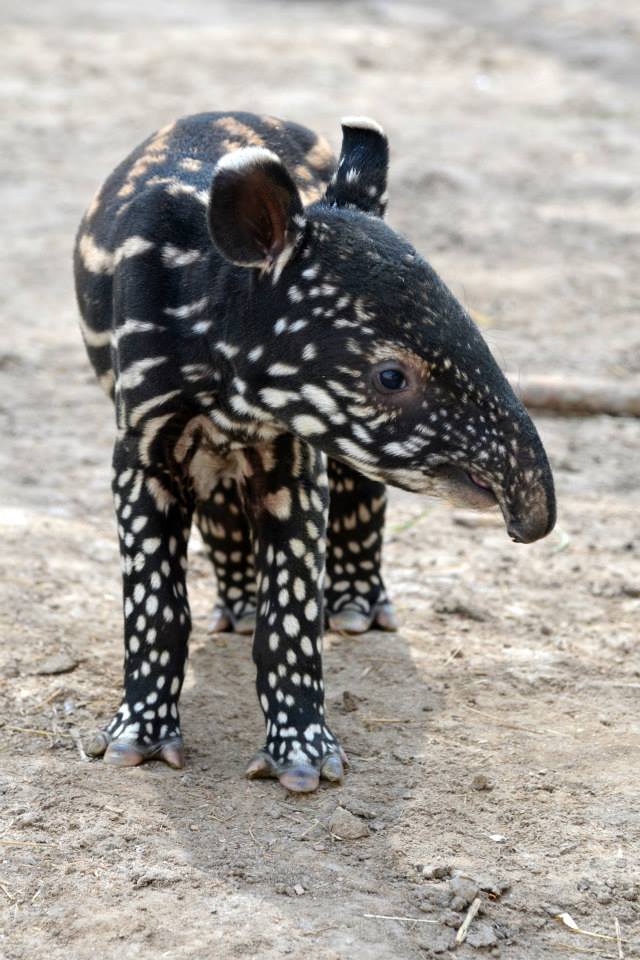[PHOTOS] Meet Baku, The Denver Zoo's Second-Ever Endangered Malayan Tapir
Seeing spots before your eyes? And stripes too? Meet Baku, the newborn Malayan tapir at the Denver Zoo.
On 8 May 2014, Denver Zoo Facebook page posted this picture of Malayan tapir calf Baku. Baku was born late in the evening of 29 April 2014.
Denver Zoo Malayan tapir calf Baku was born late in the evening of April 29, only the second birth of his species the zoo. Baku will remain behind the scenes in Toyota Elephant Passage while being cared for by his mother, Rinny, until they are comfortable enough to venture outdoors. Until then, visitors can see live, closed-circuit video of Baku on monitors inside Toyota Elephant Passage.
 facebook.com
facebook.com
Born to mother Rinny and father Benny, Baku, a male calf, is the second Malayan tapir, an endangered species native to Asia, to be born at the Denver zoo
Rinny was born at Seattle's Woodland Park Zoo in 2007 and came to Denver Zoo from there in 2010. Benny was born at the City of Belfast Zoo in Ireland in 2006 and arrived at Denver Zoo from there in 2007. The two were paired under recommendation of the Association of Zoos and Aquariums (AZA) Species Survival Plan (SSP) which ensures healthy populations and genetic diversity among zoo animals. Fortunately, the couple has proved to be an excellent match.
"Baku" (BAH-koo) is the Japanese word for tapir. Baku are also supernatural spirits in Chinese and Japanese folklore that take children's nightmares away and protect against evil. They are often depicted as having some tapir-like physical characteristics.
digitaljournal.comAlthough they are closely related to horses and rhinos, tapirs are similar in build to pigs, but significantly larger
Though they are most closely related to horses and rhinos, tapirs are similar in build to pigs, but significantly larger. Malayan tapirs have a large, barrel shaped body ideal for crashing through dense forest vegetation. Their noses and upper lips are extended to form a long prehensile snout similar to a stubby version of an elephant’s trunk.
prweb.comMalayan tapirs are the largest of the four tapir species. They stand more than 3 feet tall and can stretch from between 6 to 8 feet long. On average they weigh between 700 and 900 pounds. They are also excellent swimmers and spend much of their time in water. They can even use their flexible noses as snorkels!
Malayan tapir calves, like Baku, have a coat of spots and stripes designed to help camouflage them in he forest. As adults, they develop a distinctive color pattern with black front and back parts separated by a white or gray midsection.
Once found throughout Southeast Asia, Malayan tapirs now inhabit only the rainforests of the Indochinese peninsula and Sumatra
Malayan tapirs are the only tapir native to Asia. Once found throughout Southeast Asia, they now inhabit only the rainforests of the Indochinese peninsula and Sumatra. With a wild population of less than 2,000 individuals they are classified as endangered by the International Union for Conservation of Nature (IUCN) due to habitat loss and hunting.
prweb.com